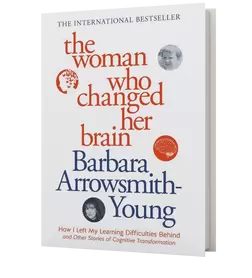|
The part of the brain responsible for non-verbal communication is located in the right hemisphere in our prefrontal cortex. A weakness in the Non-Verbal Thinking cognitive function can often lead to an individual being diagnosed with a non-verbal learning disability.
The impact can be substantial, resulting in social conflict and a lack of effective interpersonal and self-advocacy skills. These social challenges stem from a fundamental difficulty in comprehending one's own emotions and the emotions of others, as well as the struggle to adapt behavior according to the people, situation or surroundings. Individuals can often by misdiagnosed, misunderstood, often having a reputation as being rude, arrogant, shy or antisocial. |
Non-Verbal Difficulties - Cognitive Functions
Non-Verbal difficulties can be caused by weaknesses in one or more of the
following cognitive functions:
following cognitive functions:
|
Non-Verbal Thinking (Perception and interpretation of non-verbal world) |
Object Recognition (Visual memory for people, places and things) |
Kinesthetic Perception (Sense of body in space) |
|
Spatial Reasoning (Sense of moving through space- "mental map") |
Mechanical Reasoning (Sense of how things operate) |
Abstract Reasoning (Sense of ordered sequence in a process) |
Discover Your Unique Cognitive Profile
|
Arrowsmith Cognitive Questionnaire
Vertical Divider
Take our 30-minute cognitive profile questionnaire to start the journey into understanding your brain's strengths and weaknesses through a cognitive lens.
Vertical Divider
|
Arrowsmith Cognitive Assessment
The Arrowsmith Cognitive Assessment, administered by an Arrowsmith trained professional, will provide you with an in-depth insight into your unique cognitive profile.
|
A Non-Verbal Disorder is Not Just a Problem at School |
The majority of people with NVLD (Non-Verbal Learning Disability) suffer from anxiety because they struggle to comprehend and establish meaningful connections with their parents, teachers, peers, and spouses.
Some individuals manage to conceal their misunderstanding; they might appear charming and remarkably skilled in language. However, eventually, the intricate web of social interactions becomes hard to endure. The teenage years can be exceptionally challenging, marked by feelings of social isolation and behavioural issues. As adults, the difficulty in recognising or understanding cues can lead to problems in establishing priorities and communicating effectively with potential employers or friends, making the world seem like a daunting minefield. A diagnosis of NLVD may include challenges with various cognitive functions, such as difficulties in spatial navigation, awareness of one's body within a given space, and understanding the operation or sequence of things. |
Some Features of a Non-Verbal Learning Difficulty
Non-Verbal Difficulties Don't Need to be for LifeSome of the most positive changes come when we strengthen our Non-Verbal Thinking capacity. Relationships deepen, mental health flourishes, and the ability to navigate complex social worlds becomes possible.
Contact Empowering Lives if you or someone you know could benefit from stronger sense of communication and common sense. |
Testimonials
Take the next Step
|
Is Arrowsmith right for me
Vertical Divider
Talk to
Admissions |
What we offer
Vertical Divider
Check out our
Programs |
How to Enrol
Steps to
Enrolment |






